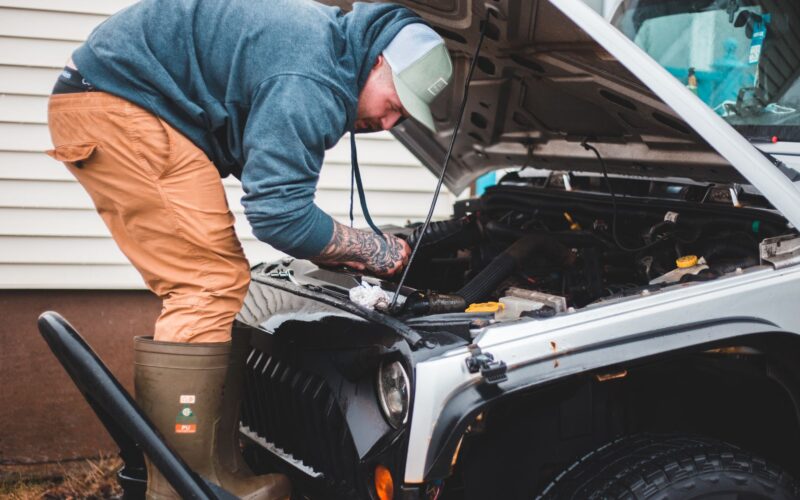A car’s fuel filter serves as a vital component in the vehicle’s fuel system, acting as a barrier against contaminants that may compromise engine performance.
Its primary function is to ensure that only clean fuel reaches the engine, preventing harmful particles, debris, and impurities from entering the fuel system and causing damage. However, over time, the fuel filter can become clogged or contaminated, hindering the flow of fuel and leading to a host of starting issues.
When the fuel filter becomes obstructed, it impedes the smooth delivery of fuel to the engine, disrupting the combustion process and compromising the vehicle’s ability to start efficiently. So, let’s dive in and discover the solutions to how to start car with bad fuel filter.
How to Start Car with Bad Fuel Filter
5. Replace the Fuel Filter
When suspecting a faulty fuel filter, it’s imperative to replace it with a new one to restore proper fuel flow. Begin by consulting your vehicle’s service manual to locate the fuel filter, which can vary in position depending on the make and model of your car.
Once identified, follow the recommended replacement procedure outlined in the manual, ensuring that you have the necessary tools and safety precautions in place.
Before removing the old fuel filter, it’s essential to relieve the pressure in the fuel system to prevent fuel spillage and potential safety hazards.
This can typically be done by disconnecting the fuel pump fuse or relay and allowing the engine to run until it stalls. With the fuel system depressurized, carefully remove the old fuel filter and dispose of it properly. Install the new fuel filter in its place, making sure to follow any specific installation instructions provided by the manufacturer.
Once the new filter is securely in position, reattach any fittings or connections and tighten them to the appropriate torque specifications. Finally, double-check that everything is properly installed before proceeding to the next step.
6. Prime the Fuel System
After replacing the fuel filter, it’s crucial to prime the fuel system to ensure proper fuel delivery to the engine. This involves filling the new filter with fuel and purging any air that may have entered the fuel lines during the replacement process.
To prime the fuel system, start by cycling the ignition key from the “OFF” to “ON” position several times, pausing for a few seconds each time. This action activates the fuel pump and allows fuel to flow through the system, gradually filling the new filter and expelling any trapped air.
Continue this process until you hear the fuel pump prime consistently, indicating that the fuel system is properly primed and ready for operation.
Once primed, start the engine and allow it to idle for a few minutes to ensure that it runs smoothly and without any issues. Be prepared for some initial roughness or hesitation as the engine adjusts to the newly installed fuel filter and purges any remaining air from the system.
7. Check Fuel Quality
In addition to replacing the fuel filter, it’s essential to ensure that you’re using clean, high-quality fuel from a reputable source. Poor-quality or contaminated fuel can contribute to fuel filter clogging and exacerbate starting issues.
To safeguard against fuel-related problems, regularly inspect the fuel quality and consider using a fuel additive designed to clean the fuel system and prevent future contamination.
These additives can help remove deposits and impurities from the fuel system, improving fuel efficiency and engine performance over time. By maintaining a steady supply of clean, high-quality fuel and utilizing fuel additives as needed, you can prolong the life of your fuel filter and prevent starting issues caused by fuel contamination.
8. Inspect Fuel Injectors
Clogged or malfunctioning fuel injectors can significantly impact starting performance and exacerbate fuel filter-related issues. To ensure optimal engine operation, it’s essential to have the fuel injectors inspected and cleaned or replaced as necessary. Start by locating the fuel injectors, which are typically positioned near the intake manifold or cylinder head.
Once located, visually inspect the injectors for any signs of buildup, corrosion, or damage. If visible debris or deposits are present, the injectors may require cleaning using specialized cleaning solutions or equipment. Alternatively, if the injectors are severely clogged or damaged, replacement may be necessary to restore proper fuel delivery to the engine.
Properly functioning fuel injectors are critical for delivering fuel to the engine efficiently, ensuring optimal combustion and engine performance. By addressing any issues with the fuel injectors proactively, you can mitigate starting problems and maintain reliable operation of your vehicle’s fuel system.







3 comments